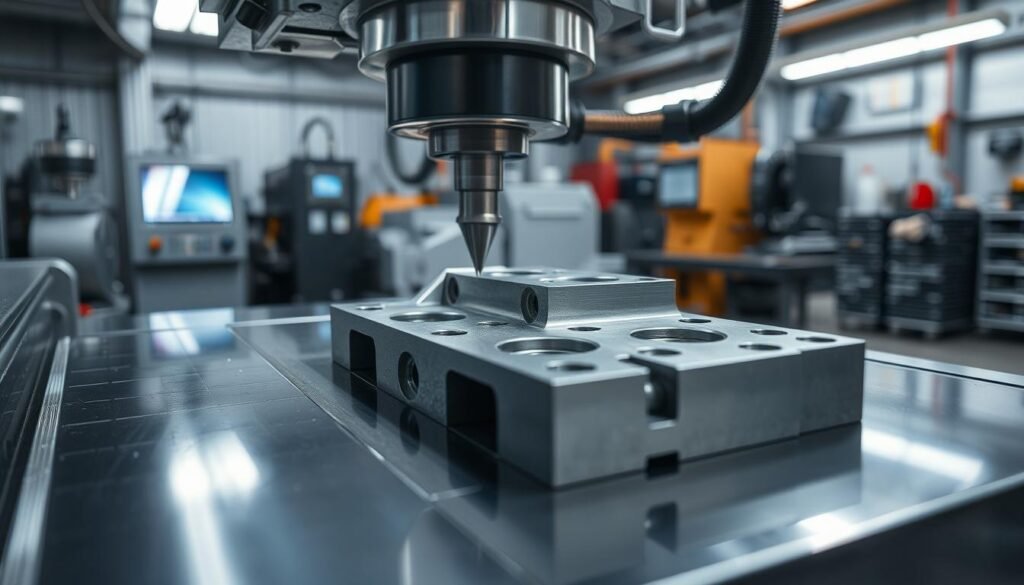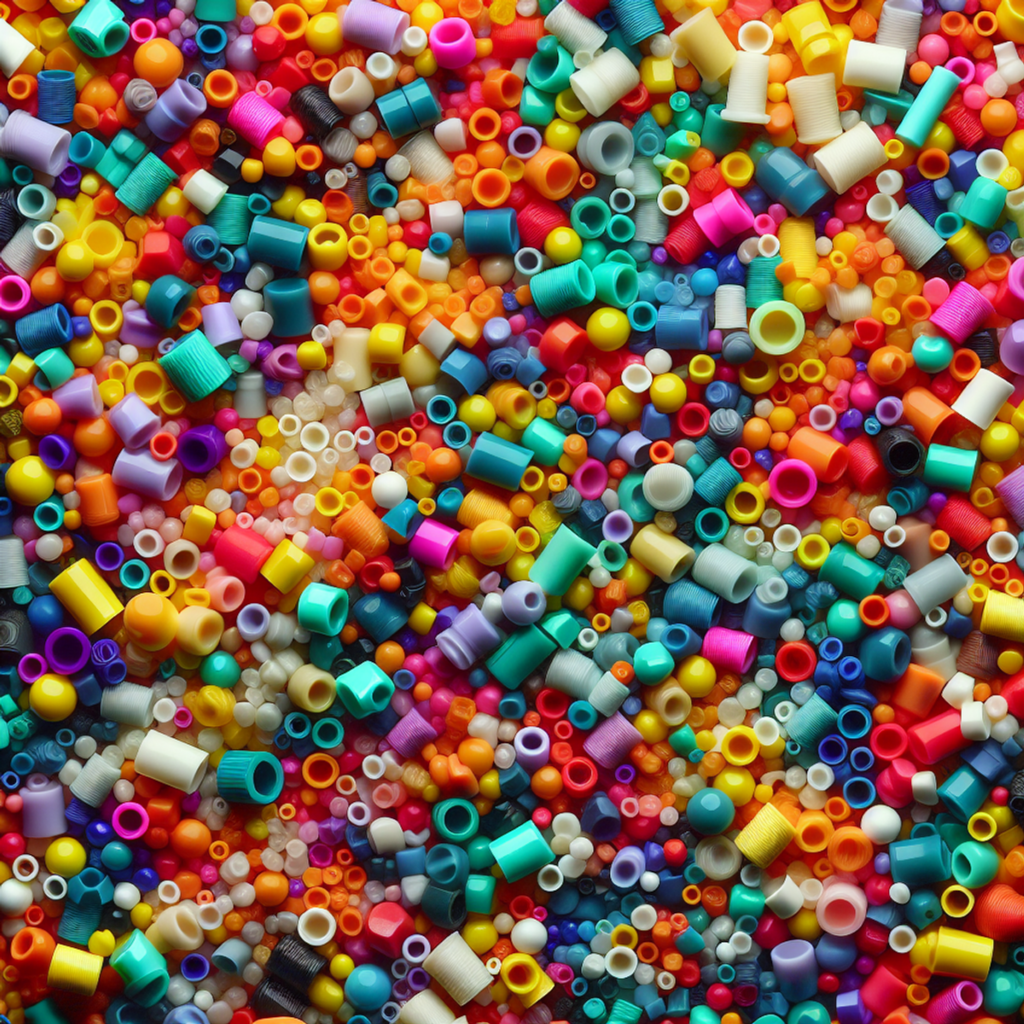Introduction
Plastic pellets, which are used as the basic building materials for most plastic products, pose both benefits and significant environmental problems. These small granules, about the size of a lentil, are widely utilized in various industries due to their malleability. Some common applications of plastic pellets include:
- Manufacturing: They are essential in the production of plastic items such as bottles, containers, and toys.
- Injection Molding: They play a crucial role in creating complex shapes and components.
- Extrusion Processes: They are used extensively in the manufacturing of pipes, films, and sheets.
However, these pellets also contribute to the growing issue of microplastic pollution in oceans. They rank second-highest in terms of weight among contributors to this pollution. The problem arises from their tendency to escape into the environment during production, transportation, and manufacturing processes. In fact, it is estimated that around 10 trillion pellets enter waterways each year, with marine animals mistaking them for food due to their resemblance to fish eggs. This ingestion results in serious health problems for marine life and leads to approximately $13 billion worth of damage to marine ecosystems annually.
Efforts have been made to address this issue, such as Operation Clean Sweep, which aims to reduce pellet spills. However, there has been a lack of public reporting on these efforts over the past 25 years. While it is important to understand the environmental impact of plastic pellets, it is equally crucial to explore innovative ways to use them.
Understanding these environmental implications is crucial while exploring innovative uses of plastic pellets.
To gain further insight into how plastic waste affects our planet, I recommend reading The Impact of Plastic Waste on Earth. Additionally, if you’re interested in optimizing your recycling processes, our Comprehensive Guide to Single Screw Plastic Pelletizers can provide valuable information.
1. Weighted Blankets and Doll Filler
Weighted Blankets
Plastic pellets play a crucial role in the making of weighted blankets. They serve as the core material responsible for providing the desired weight and flexibility to these therapeutic blankets, which are known to alleviate anxiety and enhance sleep quality.
The primary function of plastic pellets in weighted blankets is to ensure even weight distribution throughout the blanket. This not only makes it comfortable but also allows it to conform to the contours of the user’s body.
For instance, renowned brands like YnM Weighted Blankets utilize glass beads or plastic pellets to achieve the desired weight. Plastic pellets are particularly popular due to their:
- Consistent size and shape
- Non-toxic nature
- Ease of washing and maintenance
Doll Filler
Plastic pellets are also widely used as doll fillers to lend a more lifelike quality to toys. By adding weight and flexibility, these pellets enhance the movement and posture of dolls, resulting in a more realistic appearance.
This characteristic proves especially beneficial for collectible dolls or those employed for therapeutic purposes.
However, when utilizing plastic pellets in weighted blankets or as doll fillers, safety considerations come into play:
- The plastic pellets must be non-toxic and free from harmful chemicals.
- They should be securely enclosed within the doll to prevent any choking hazards for young children.
While exploring the use of plastic pellets in various applications, it’s crucial to consider their impact on sustainability. As Ralph Bicknese rightly said, sustainability is about ecology, economy, and equity.
One way to address this concern is by adopting recycled pellets, which can significantly contribute towards reducing plastic waste pollution. These recycled alternatives offer similar benefits while being more environmentally friendly.
To gain a deeper understanding of the ongoing issues surrounding plastic waste and its environmental consequences, feel free to explore this insightful page on plastic waste pollution.
2. Shooting Rest Filler
Plastic pellets are highly effective as a shooting rest filler, providing both stability and recoil absorption. When used in shooting rests, they offer several distinct advantages:
- Stability: Plastic pellets have a consistent shape and weight, making them ideal for filling shooting rests. This helps in maintaining the position of the firearm, ensuring more accurate shots.
- Recoil Absorption: Due to their density and flexibility, plastic pellets can absorb the shock of recoil better than other materials such as sand or rice. This makes shooting more comfortable, especially during extended sessions.
- Weather Resistance: Unlike organic fillers, plastic pellets are not affected by moisture or temperature changes. They do not clump together when wet and remain stable under varying environmental conditions.
- Ease of Handling: Filling and refilling shooting rests with plastic pellets is straightforward. Their uniform size allows for easy pouring, minimizing spillage and waste.
For those looking to optimize their shooting setup, considering plastic pellets as a filler can be a game-changer. Their combination of stability and absorption properties makes them an excellent choice for both amateur shooters and professionals.
But did you know that some individuals with autism experience sympathy for inanimate objects? This emotional connection highlights the potential significance that shooters may develop towards their chosen equipment – including the type of filler used in their shooting rests.
Another aspect worth exploring is the plastic extrusion process, which provides insight into how these essential components are manufactured efficiently. This further emphasizes their role in numerous applications beyond just industrial uses.
For those involved in manufacturing or crafting with plastics, investing in a reliable plastic cutting machine ensures precise and efficient handling of materials, enhancing productivity across various projects.
Furthermore, if you’re an avid hunter, it’s crucial to familiarize yourself with the specific regulations and guidelines outlined in your state’s hunting digest such as the one provided by Illinois Department of Natural Resources. This knowledge will contribute to responsible and legal hunting practices.
The practicality of using plastic pellets in shooting rests showcases their versatility beyond traditional industrial applications. With their numerous benefits, they stand out as a preferred choice among enthusiasts aiming for accuracy and comfort.
3. Crafts, Rock Tumbler Media, and Sustainable Practices
Exploring the Creative Potential of Plastic Pellets in DIY Projects and Art Installations
Plastic pellets offer a world of possibilities for crafting enthusiasts and artists alike. Their small size makes them ideal for adding texture to art installations. By incorporating these pellets into mediums like resin or paint, artists can infuse their work with depth and interest.
Here are some examples of how plastic pellets can be used in crafts:
- Mosaic Art: Add plastic pellets to mosaic designs for a unique textured effect.
- Jewelry Making: Utilize them as fillers in resin-based jewelry to create lightweight, colorful pieces.
- Model Scenery: Enhance dioramas and model train landscapes by using plastic pellets to simulate gravel or other textures.
The Crucial Role of Plastic Pellets in Rock Tumbling Machines
When it comes to rock tumbling, plastic pellets play a vital role in the polishing process. Acting as a cushioning agent, they protect rocks from chipping during tumbling, resulting in a smoother, more polished finish.
Benefits of using plastic pellets as rock tumbler media include:
- Protection: Cushions stones during tumbling, reducing breakage.
- Consistency: Helps maintain uniform pressure and movement within the tumbler.
- Efficiency: Enhances overall polishing efficiency, leading to better results.
While exploring these creative avenues, it’s worth considering sustainable practices such as plastic recycling machines that not only turn waste into profit but also contribute to environmental conservation. This financial potential is further highlighted in our article on how you can earn money with a plastic recycling machine.
Furthermore, companies like Celanese have been introducing sustainable materials for automotive boots and bellows, showcasing the growing adoption of eco-friendly solutions in various industries. Incorporating plastic pellets into your creative projects or rock tumbling activities not only yields excellent results but also aligns with broader sustainability efforts.
4. Eye Spy Bags and Aroma Beads
Sensory Play Benefits of Plastic Pellets-Filled Eye Spy Bags for Children
Eye spy bags are a fantastic sensory play tool filled with plastic pellets and small objects hidden within. These bags offer numerous benefits for children, such as:
- Improving Fine Motor Skills: Manipulating the bag helps children develop their hand-eye coordination and dexterity.
- Enhancing Focus and Attention: Searching for objects within the bag can engage children for extended periods, promoting concentration.
- Providing Tactile Stimulation: The texture of plastic pellets offers a soothing sensory experience, often used in therapy for children with sensory processing issues.
Plastic pellets in eye spy bags create a flexible medium that responds well to touch, making them an ideal filler. Parents and educators often use these bags as educational tools to teach shapes, colors, and counting.
Creating Scented Air Fresheners with Aroma Beads and Plastic Pellets
Aroma beads infused with essential oils are another innovative application of plastic pellets. These beads absorb fragrance oils, releasing pleasant scents over time. Here’s how you can use them:
- Choose Your Essential Oils: Select your favorite fragrances or blends tailored to different moods or seasons.
- Mix the Beads and Oils: Combine the aroma beads with essential oils in a sealable container, allowing the beads to soak up the scent.
- Cure Time: Let the mixture sit for several days until the beads fully absorb the oil.
Using plastic pellets as filler alongside aroma beads can enhance their appearance and add weight, preventing them from being easily knocked over when used as air fresheners in homes or cars.
These applications highlight the versatility of plastic pellets beyond industrial uses. By incorporating them into everyday items like eye spy bags and aroma beads, you unlock creative ways to engage children in sensory play or freshen up your living space effortlessly. AI technology is also shaping the plastic industry, offering hope for a greener future. Discover how AI is being used to design eco-friendly plastics, improve recycling, and find surprising new solutions to our plastic waste crisis.”.
Exploring the Impact of Plastic Pellets on the Environment and Marine Life
Plastic pellets, tiny yet pervasive, are a significant contributor to [microplastic pollution in our oceans](https://www.pewtrusts.org/en/research-and-analysis/articles/2018/09/24/plastic-pollution-affects-sea-life-throughout-the-ocean). These small, lentil-sized particles are the building blocks for most plastic products, with 270 million metric tons of plastic produced annually. Unfortunately, a substantial portion of these pellets escapes during production, transportation, and manufacturing processes. It’s estimated that 10 trillion plastic pellets enter waterways each year.
Harmful Effects on Marine Animals
Marine animals often mistake plastic pellets for food due to their resemblance to fish eggs. Ingesting these pellets can have dire consequences:
- Physical Harm: The ingestion of plastic pellets can cause internal blockages and injuries in marine animals.
- Toxin Absorption: Plastic pellets absorb toxins from the environment, which then enter the food chain when consumed by marine life. This bioaccumulation of toxins poses significant health risks not only to marine animals but also to humans who consume seafood.
- Disruption of Feeding Habits: The presence of plastic in the stomachs of marine creatures can lead to malnutrition or starvation, as the ingested plastics occupy space meant for real food.
Ecosystem Damage
The damage caused by plastic pollution extends beyond individual animals and affects entire ecosystems:
- Coral Reefs: Plastic debris can smother coral reefs, obstructing light and oxygen crucial for coral survival.
- Seafloor Habitats: Plastic pellets settling on the ocean floor disrupt habitats for benthic organisms.
- Water Quality: As plastics break down into smaller fragments, they release harmful chemicals into marine environments, deteriorating water quality and affecting all forms of aquatic life.
Plastic pollution causes an estimated $13 billion in damage to marine ecosystems annually. If current trends continue unchecked, oceans are projected to contain more plastic than fish by 2050.
Industry Initiatives and Solutions
Efforts such as Operation Clean Sweep aim to reduce pellet spills through best practices in handling and transportation. However, public reporting on progress has been minimal over the past 25 years. Advocacy organizations like As You Sow challenge major resin manufacturers to implement stricter pellet spill prevention measures.
For example, companies are being urged to adopt technologies like advanced plastic extruders, which enhance manufacturing efficiency while mitigating waste. Understanding how innovations like AI-driven plastic extrusion can improve quality control is crucial for reducing environmental impact.
JianTai Plastic Machinery Ltd.’s insights shed light on energy-efficient solutions in the plastics industry that can help minimize harm caused by plastic pellets.
Moreover, exploring JianTai’s guide on plastic extruders reveals how these advanced technologies in manufacturing contribute to sustainability by enhancing efficiency and reducing waste.
Additionally, discovering JianTai’s article on AI in plastic extrusion highlights how AI-driven processes transform plastic extrusion, improving quality control, reducing waste, saving energy, and boosting efficiency in the manufacturing process.
Understanding the full scope of how plastic pellets impact marine environments underscores the urgent need for comprehensive strategies to mitigate this pollution source.
Efforts to Mitigate the Plastic Pellet Problem
Future Projections and Preventive Measures
The projected increase in plastic pellet pollution is alarming. Without intervention, the volume of plastic entering the oceans could triple by 2040. This highlights a critical need for comprehensive preventive measures to curb the environmental impact.
Operation Clean Sweep Initiative
Operation Clean Sweep is an industry-led initiative aimed at reducing pellet spills during manufacturing and transportation. This program encourages companies to adopt best practices for pellet containment and cleanup, aiming to prevent pellets from reaching waterways. However, despite over two decades of existence, the initiative has faced criticism for its lack of transparency and public reporting.
Advocacy by As You Sow
The As You Sow organization plays a pivotal role in advocating for better practices among plastic resin manufacturers. They focus on holding these companies accountable through various means, including shareholder resolutions and public campaigns.
Key Advocacy Actions:
- Shareholder Resolutions: As You Sow has successfully filed numerous shareholder resolutions demanding improved pellet handling practices.
- Corporate Engagements: The organization actively engages with major corporations to push for agreements on implementing stricter spill prevention measures.
Case Study: Company Agreements
Several companies have made significant strides in pellet spill prevention through agreements facilitated by advocacy groups:
- Hershey AGM Proposal: Highlighted the need for extended packaging responsibility beyond the point of sale.
- Maine Legislation: Became the first U.S. state to enact producer responsibility legislation for packaging waste collection and recycling.
These agreements serve as benchmarks for other corporations aiming to reduce their environmental footprint.
Industry Accountability
Efforts like those by As You Sow are vital in pressuring companies to adopt sustainable practices. The Waste & Opportunity Report, released in May 2021, underscores the lack of corporate leadership on plastic pollution among major U.S. consumer-facing companies. This report analyzes actions taken by 50 leading companies to mitigate plastic pollution, emphasizing the ongoing need for accountability and innovation in handling plastic waste.
Exploring solutions and engaging with initiatives such as plastic bottle recycling machines can also contribute significantly to reducing pellet pollution. These machines collect, clean, shred, and melt plastic bottles into new products, showcasing a pathway toward sustainable plastic management.
Additionally, understanding advancements in plastic injection molding machines can offer insights into improving efficiency and reducing waste during production processes. These machines enable the mass production of complex plastic parts with high precision, potentially minimizing spillage during manufacturing.
By focusing on concrete actions and industry accountability, it becomes possible to address the severe environmental impact posed by plastic pellets while still leveraging their diverse applications effectively.
Conclusion
Addressing the environmental impact of plastic pellets is crucial given their significant contribution to microplastic pollution. Even with their versatile uses, such as in weighted blankets, shooting rest fillers, and crafts, we cannot overlook the environmental consequences.
Supporting organizations like As You Sow in their advocacy efforts can make a tangible difference. Engaging in initiatives that promote better pellet handling practices and exploring sustainable alternatives to plastic materials are steps we can take right now.
For those interested in learning more about sustainable practices, consider reading:
- The Impact of Plastic Recycling Machines on Environmental Sustainability – This resource delves into how recycling plastic waste through advanced machines can drive environmental sustainability by reducing waste, conserving resources, and promoting circular economies.
- From Plastic Waste to Pellet Sales: A Journey in Plastic Recycling – This article provides valuable insights into how recycling plastic waste into useful products like pellets can help reduce environmental threats.
By being informed and proactive, we help minimize the detrimental effects of plastic pellets on our environment while still benefiting from their diverse applications.
FAQs (Frequently Asked Questions)
What are some uses of plastic pellets in weighted blankets and dolls?
Plastic pellets are used to provide weight and flexibility to weighted blankets, allowing for a more calming and comforting experience. They are also used as filler for dolls to give them a lifelike feel, with safety considerations taken into account.
How are plastic pellets utilized in shooting rests?
Plastic pellets are used in shooting rests to provide stability and absorb recoil, offering advantages such as improved accuracy and reduced impact on the shooter.
In what ways can plastic pellets be incorporated into crafts and rock tumblers?
Plastic pellets can be creatively used in DIY projects and art installations, and they aid in the polishing process of rocks in tumbling machines by facilitating the tumbling action.
What are the benefits of using plastic pellets in eye spy bags and aroma beads?
Plastic pellets-filled eye spy bags offer sensory play benefits for children, while plastic pellets are also used as filler for aroma beads to create scented air fresheners.
How do plastic pellets contribute to environmental pollution and marine life impact?
Plastic pellets significantly contribute to microplastic pollution in the ocean, leading to harmful effects on marine animals and the overall ecosystem.
What efforts are being made to address the plastic pellet problem?
There is a projected increase in plastic pellet pollution, prompting initiatives such as Operation Clean Sweep and advocacy work by organizations like As You Sow to hold plastic resin manufacturers accountable. Companies have also made agreements to implement pellet spill prevention measures, with shareholder resolutions filed for better pellet handling practices.






